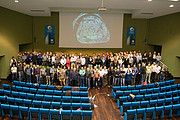- News
- Science
- Scientific Bodies
- Divisions
- Commissions
- Commission A1 Structure
- Commission A2 Structure
- Commission A3 Structure
- Commission A4 Structure
- Commission B1 Structure
- Commission B2 Structure
- Commission B3 Structure
- Commission B4 Structure
- Commission B5 Structure
- Commission B6 Structure
- Commission B7 Structure
- Commission C1 Structure
- Commission C2 Structure
- Commission C3 Structure
- Commission C4 Structure
- Commission C5 Structure
- Commission D1 Structure
- Commission E1 Structure
- Commission E2 Structure
- Commission E3 Structure
- Commission E4 Structure
- Commission F1 Structure
- Commission F2 Structure
- Commission F3 Structure
- Commission F4 Structure
- Commission G1 Structure
- Commission G2 Structure
- Commission G3 Structure
- Commission G4 Structure
- Commission G5 Structure
- Commission H1 Structure
- Commission H2 Structure
- Commission H3 Structure
- Commission H4 Structure
- Commission J1 Structure
- Commission J2 Structure
- Commission J3 Structure
- Commission X1 Structure
- Commission X2 Structure
- Past Commission Organising Committees
- Working Groups
- Centres
- Scientific Meetings
- Rules & Guidelines
- General Assemblies
- Meeting Proposals
- Future IAU Meetings
- General Assemblies
- EC Meetings
- Officers' Meetings
- Regional Meetings
- Symposia
- Focus Meetings
- Institutional Meetings
- IAU Offices Meetings
- IAU-Sponsored Meetings
- Letters of Intent submitted for 2024
- Letters of Intent submitted for 2023
- Letters of Intent submitted for 2022
- Letters of Intent submitted for 2021
- Letters of Intent submitted for 2020
- Past IAU Meetings
- Templates
- Other Meetings
- Grants & Prizes
- Scientific Bodies
- Publications
- IAU Publications
- IAU Strategic Plan
- Symposia
- WGSBN Bulletins
- Regional Meetings
- Information Bulletins/Catalyst
- E-Newsletters
- Focus Meetings
- Transactions A
- Transactions B
- Related Publications
- GA Newspapers
- CAPjournal
- IAU Books
- Brochures
- IAU Offices
- WG Reports
- Commission Reports
- Division Reports
- Past IAU Publications
- Rules, Guidelines and Instructions for Proceedings
- Publishers
- IAU Publications
- Administration
- About the IAU
- Statutes & Rules
- IAU Policies
- IAU Executive Bodies
- IAU Secretariat
- Resolutions
- Members Administration
- Administrative Dates & Deadlines
- International Organisations Relations
- Donate to the IAU
- Training in Astronomy
- Astronomy for Education
- Astronomy for Development
- Astronomy for the Public
- Office for Astronomy Outreach
- FAQ
- Themes
- Satellite Constellations
- Astronomy in Everyday Life
- How to Report a Discovery
- Careers in Astronomy
- Defining our Place in the Cosmos
- The Constellations
- Light Pollution
- Measuring the Universe
- Near Earth Objects
- How to Participate in Astronomy Research
- Naming of Astronomical Objects
- Naming of Exoplanets
- Buying Star Names
- Naming Stars
- Pluto and the Solar System
- IAU Member Statistics
- Our Moon: the Moon
- Meteors & Meteorites: The IAU Definitions of Meteor Terms
- UNESCO-IAU Portal to the Heritage of Astronomy
- Social Media
- Past Events
- Call for Online Resources
- Astronomy@Home Awards
- Contact
iau1804 — Press Release

11 May 2018
Recipients of Gruber Foundation 2018 Cosmology Prize Announced
The Planck spacecraft team has been awarded the prestigious prize for fundamentally advancing our understanding of the Universe
The Gruber Foundation Cosmology Prize, which is co-sponsored by the IAU, honours leading scientists who have made discoveries leading to fundamental advances in our understanding of the Universe. The 2018 prize has been awarded to the scientists and engineers behind the ESA Planck Spacecraft, which measured the matter content and geometry of the universe with unprecedented precision.
The recipients of this year’s Gruber Foundation Cosmology Prize, which is co-sponsored by the IAU, were announced yesterday. The prize is awarded annually to leading scientists and cosmologists who have made groundbreaking discoveries that change or challenge our understanding of the Universe.
The 2018 Cosmology Prize was awarded to the Planck Team and to Jean-Loup Puget and Nazzareno Mandolesi, the leaders of the High Frequency Instrument and Low Frequency Instrument consortia, for mapping the temperature and polarisation of the cosmic microwave background (CMB) radiation using the ESA Planck spacecraft [1].
The three recipients will divide the $500,000 annual award. Mandolesi and Puget, as the principal investigators on the observatory’s two instruments, will each receive $125,000, while the Planck team will receive $250,000. The Prize will be awarded on August 20, at the General Assembly of the International Astronomical Union, in Vienna, Austria. Mandolesi and Puget will also receive a gold medal.
Planck, which was named after the German physicist Max Planck, was launched in 2009 and was operated by the European Space Agency until 2013. During this time, the spacecraft carried out a painstakingly detailed survey of the Universe at microwave and infrared wavelengths. It was decommissioned in 2013, after operating for three more years than originally planned.
The Planck spacecraft measured very small variations in the temperature of the CMB, the oldest known electromagnetic radiation. This omnipresent radiation is a faint relic dating from 380,000 years after the Big Bang, and provides details of the very earliest history of the Universe. Planck’s sophisticated detectors, which were sensitive enough to detect temperature differences of a few millionths of a degree, provided cosmologists with precise measurements of the large-scale properties of the Universe.
This allowed cosmologists to constrain the conjectured “inflationary” phase of the Universe, the infinitesimally brief period immediately after the Big Bang during which the Universe expanded rapidly. Planck also allowed scientists to determine when the first stars formed, and provided unique information about interstellar dust and magnetic fields in our Galaxy.
The citation of the 2018 Gruber Foundation Cosmology Prize reads:
The Gruber Foundation is pleased to present the 2018 Cosmology Prize to the Planck Team, and to Jean-Loup Puget and Nazzareno Mandolesi, the leaders of the HFI and LFI instrument consortia, for mapping the temperature and polarization of the cosmic microwave background radiation with the ESA Planck spacecraft. Planck measured, with unprecedented precision, the matter content and geometry of the universe, the imprint on the CMB of hot gas in galaxy clusters and of gravitational lensing by large-scale structure, constrained a hypothetical `inflationary' phase, pinned down when the first stars formed, and provided unique information about interstellar dust and magnetic fields in our Galaxy.
Notes
[1] The two instruments of the Planck observatory, the High Frequency and Low Frequency Instruments, detected the total intensity and polarisation of photons. The instruments were cooled to a tenth of a degree above absolute zero, and were for three years the coldest known objects in space.
The High Frequency Instrument, under the direction of Puget, studied the universe in the far-infrared regime; the Low Frequency Instrument, under the direction of Mandolesi, mostly observed in the microwave regime.
More information
The IAU is the international astronomical organisation that brings together more than 10 000 professional astronomers from almost 100 countries. Its mission is to promote and safeguard the science of astronomy in all its aspects through international cooperation. The IAU also serves as the internationally recognised authority for assigning designations to celestial bodies and the surface features on them. Founded in 1919, the IAU is the world's largest professional body for astronomers.
Links
Contacts
A. Sarah Hreha
Executive Director, The Gruber Foundation, Yale University
New Haven, CT 06510, USA
Tel: www.gruber.yale.edu
Cell: +1 203-432-6231
Email: sarah.hreha@gruber.yale.edu
Lars Lindberg Christensen
IAU Press Officer
Garching bei München, Germany
Tel: +49 89 320 06 761
Cell: +49 173 38 72 621
Email: lars@eso.org



